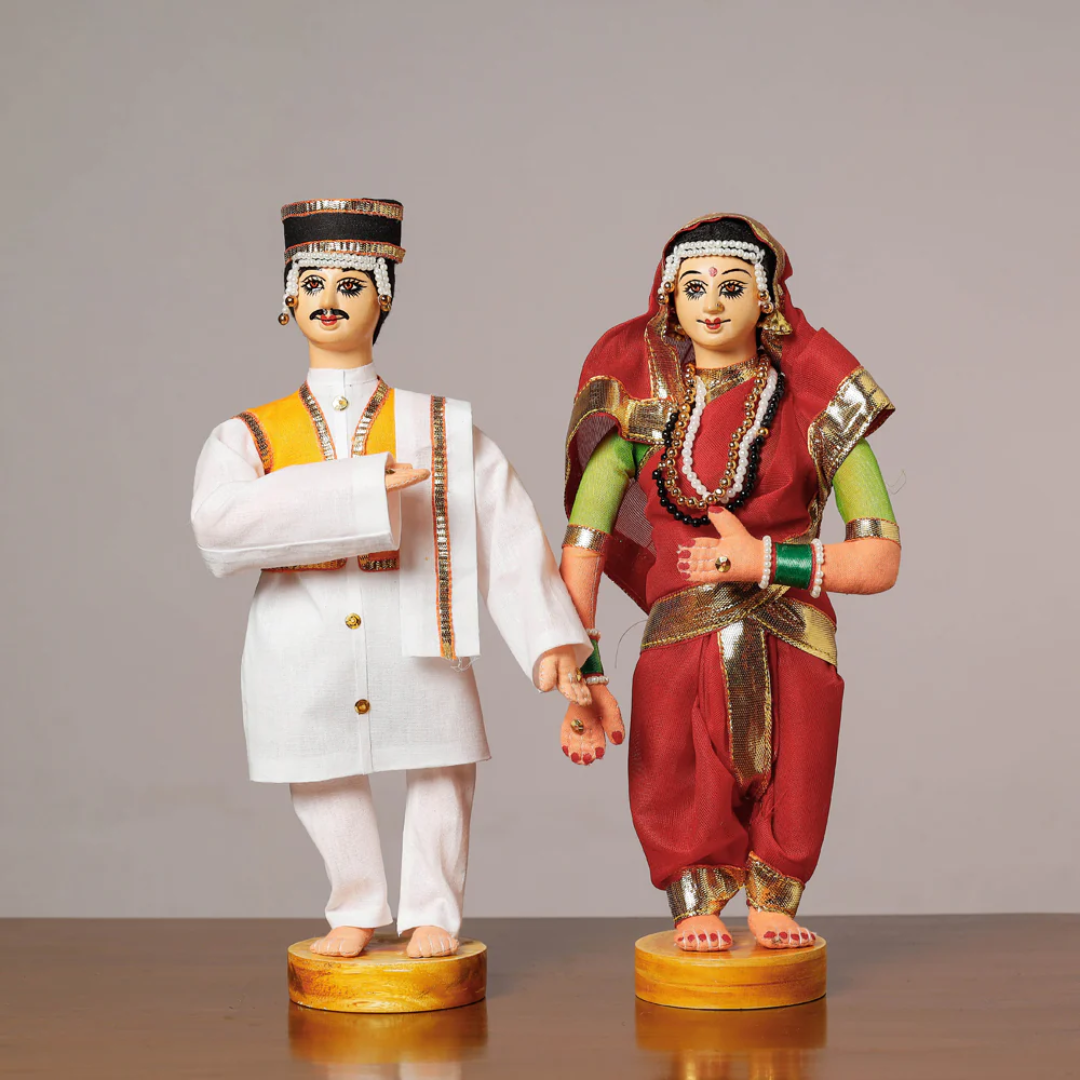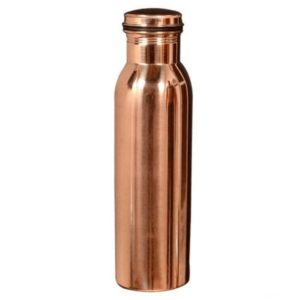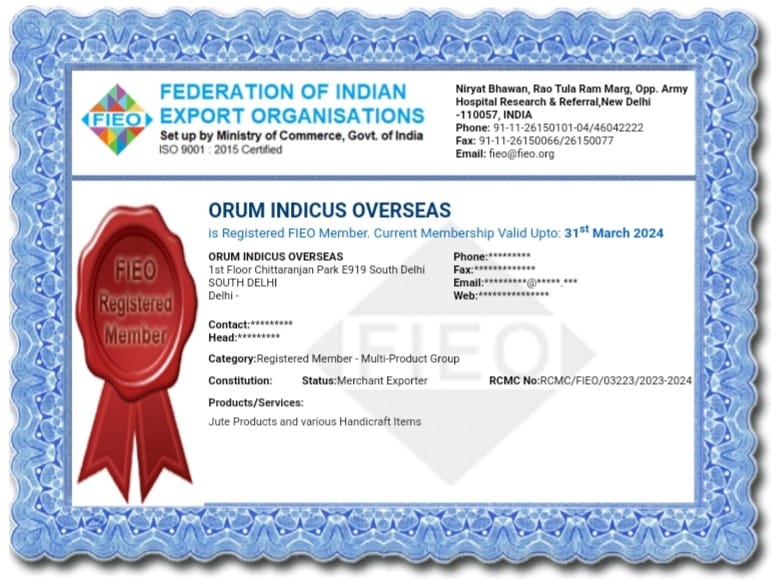Description
The eastern province of West Bengal, India has a tradition of handicraft making. Almost all the districts have something or the other to offer that are known for their uniqueness and rarity. Ghurni in the Nadia district, Jainagar, Rajgarh and Kanthalia are some of the places where the art of making clay doll is practiced till this day. Today’s Bengal was previously known as kingdom of Gauda which was ruled by Gaudeshwar Maharajadhiraj Shashanka Deva in the 7th century AD, i.e. between 600 CE and 636 CE. Thr present day Kanthalia village is very close to King Sashanka’s capital, Karna Suvarna. Archaeological excavations have unearthed different types of clay dolls that were made during that period. The porters use techniques that are centuries old that have been passed on from one generation to the next. They give shape to their creations with special emphasis on the wonted sequence of village life like farmer and bullock cart, farmer ploughing the field, women reaping paddy, mother bathing her child, women engaged in various household chores, animal figures, temples and huts et al. Clay dolls of Kanthalia are known for their distinctive shape and style; additionally, they can be recognized from their facial features and the colours and patterns drawn on them.
Currently there lives around 500 potters who are still practicing this art of clay doll making that are of heirloom quality. Artists are totally dependent on their traditional knowledge and produce these enticing dolls and figurines that are 100% handmade. Our artists are trying their best to keep this wonderful art afloat and preserve this art form from getting extinct.
Shantiniketan in Birbhum district of West Bengal is also another location where very realistic looking clay dolls are manufactured. The artists use vibrant colour combinations that make them more captivating and appealing to look at.
One of the most renowned centres of doll making art and clay sculptures is Ghurni, Krishnanagar in Nadia district. The clay dolls are famous for their beauty, lifelike faces and brilliant colours. If anyone wants to get a glimpse of the village life of Bengal, then she/he must visit Ghurni; these clay structures portray the vignettes of bucolic lifestyle – harvest, working women, baul musicians with traditional musical instrument called Ektara or Dotara in hand, gorgeous bridegrooms, vegetable seller selling vegetables in a farmers’ market, tribal folks, temples, animals, birds, insects and many more. The art of clay doll making got an impetus during the reign of Maharaja Krishnachandra who ruled Krishnanagar from 1710 to 1783. At present around 300 artists are dedicatedly pursuing their traditional art of clay doll making in this area. Our village artists are desperately in need of support and want the world to know about their talent. Their endeavour is to get more opportunities to be able to showcase their traditional skill for which they need our patronage.

















Reviews
There are no reviews yet.